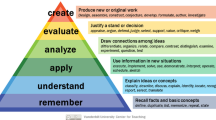Abstract
The Virtual Electrician Training (VET) system, designed to provide effective and innovative technical training in a virtual reality (VR) environment, allows trainees to practice operational tasks safely and realistically on an electrical grid. By integrating advanced VR technology with flexible tools for managing training content, the VET system offers immersive and interactive simulations that enhance skill acquisition and operational proficiency. Trainees engage with detailed 3D models and scenarios of electrical infrastructure, including transformers and switchgear, enabling them to perform complex procedures such as circuit switching and live-line work in a controlled and risk-free setting. The system employs a semantic database managed by Apache Fuseki, which seamlessly links 3D models, scenes, and training scenarios, facilitating efficient content creation, modification, and updates. Key components include a central server, stationary and mobile training stations equipped with VR headsets and controllers, and auxiliary equipment like motion sensors and communication devices. The VET system’s architecture supports easy scalability and adaptability, ensuring that training programs remain current with industry standards and evolving operational requirements. This comprehensive training tool significantly improves safety, reduces training costs, and enhances the overall quality and efficiency of technical training in the dynamic energy sector.
Access this chapter
Tax calculation will be finalised at checkout
Purchases are for personal use only
Similar content being viewed by others
References
Carruth, D.W.: Virtual reality for education and workforce training. In: 2017 15th International Conference on Emerging eLearning Technologies and Applications (ICETA), pp. 1–6. IEEE, New York (2017)
Wang, P., Wu, P., Wang, J., Chi, H., Wang, X.: A critical review of the use of virtual reality in construction engineering education and training. Int. J. Environ. Res. Public Health 15, Article 1204 (2018)
Shakirova, N., Al Said, N., Konyushenko, S.: The use of virtual reality in geo-education. Int. J. Emerg. Technol. Learn. 15(20), 59–70 (2020)
Pellas, N., Dengel, A., Christopoulos, A.: A scoping review of immersive virtual reality in STEM education. IEEE Trans. Learn. Technol. 13(4), 748–761 (2020)
Ali, S., Azmat, S.A., Noor, A.U., Siddiqui, H., Noor, S.: Virtual reality as a tool for physical training. In: 2017 First International Conference on Latest Trends in Electrical Engineering and Computing Technologies (INTELLECT), pp. 1–6. IEEE, New York (2017)
Schneider Electric: HoloLens Application on Premset. https://www.youtube.com/watch?v=RpXyagutoZg. Accessed 31 May 2024
ITI VR: VR Mobile Crane Simulator Administrator Manual. https://cdn2.hubspot.net/hubfs/78935/MCO-VR-SIM-Manual_ITI_rev3.17.17.pdf. Accessed 31 May 2024
VRSim: SimSpray, Application Information. https://www.simspray.net Accessed 31 May 2024
VRSim: Simspray, Product Overview. https://www.simspray.net/product.html. Accessed 31 May 2024
Mimbus: WAVE NG. https://mimbus.com/en/produit/welding/. Accessed 31 May 2024
zSpace: Wave NG Reference Sheet. https://cdn.zspace.com/downloads/documentation/edu-resources/WaveNGReferenceSheet_0222.pdf. Accessed 31 May 2024
Mimbus: WOOD-ED Table. https://www.mimbus.com/en/portfolio/wood-ed-table-en/. Accessed 31 May 2024
Moskaliuk, J., Bertram, J., Cress, U.: Training in virtual training environments: Connecting theory to practice. In: Proceedings of the 9th Computer Supported Collaborative Learning Conference. International Society of the Learning Sciences, Hong Kong (2011)
Appsbow: Virtual Training Environment System. http://appsbow.com/services/virtual-training-environment. Accessed 31 May 2024
Immersive Technologies: IM360-B Training Simulator. https://www.immersivetechnologies.com/products/IM360-Training-Simulator.htm. Accessed 31 May 2024
Immersive Technologies: WorksiteVR Quest. https://www.immersivetechnologies.com/products/WorksiteVR.htm. Accessed 31 May 2024
Gutiérrez, T., Rodríguez, J., Vélaz, Y., Casado, S., Suescun, A., Sánchez, E.J.: IMA-VR: a multimodal virtual training system for skills transfer in Industrial Maintenance and Assembly tasks. In: 19th International Symposium in Robot and Human Interactive Communication, pp. 428–433. IEEE, Viareggio (2010)
Immersive Touch: ImmersiveView Surgical Planning. https://www.immersivetouch.com/immersiveview-surgical-plan. Accessed 31 May 2024
Setapp: Best Forklift Operator, Website. https://gamedust.co/project/game-best-forklift-operator. Accessed 31 May 2024
Setapp: Best Forklift Operator, App. https://store.steampowered.com/app/1684670/Best_Forklift_Operator/. Accessed 31 May 2024
Gałązkiewicz, A., Maik, M., Walczak, K., Leszczyński, C., Głowaczewska, J.: A comprehensive approach to the analysis of VR training progress of Industry 4.0 employees. In: De Paolis, L.T., Arpaia, P., Sacco, M. (eds.) Extended Reality. XR Salento 2023. LNCS, vol. 14219, pp. 491–504. Springer, Cham (2023). https://doi.org/10.1007/978-3-031-43404-4_34
Maik, M., Sobociński, P., Walczak, K., Strugała, D., Górski, F., Zawadzki, P.: Flexible photorealistic VR training system for electrical operators. In: Proceedings of the 27th International Conference on 3D Web Technology, pp. 1–9. Association for Computing Machinery, New York, NY, USA (2022)
Flotyński, J., Walczak, K., Sobociński, P., Gałązkiewicz, A.: Knowledge-based management of virtual training scenarios. Procedia Comput. Sci. 192, 766–775 (2021)
Górski, F., Grajewski, D., Buń, P., Zawadzki, P.: Study of interaction methods in virtual electrician training. IEEE Access 9, 118242–118252 (2021)
Flotyński, J., et al.: Semantic representation of domain knowledge for professional VR training. In: Proceedings of the 24th International Conference on Business Information Systems BIS 2021, pp. 139–150. TIB Open Publishing (2021)
Strugała, D., Nowak, A., Górski, F., Walczak, K.: Semi-structured visual design of complex industrial 3D training scenes. In: The 25th International Conference on 3D Web Technology, pp. 1–9. Association for Computing Machinery, New York, NY, USA (2020)
Walczak, K., et al.: Semantic modeling of virtual reality training scenarios. In: Bourdot, P., Interrante, V., Kopper, R., Olivier, A.H., Saito, H., Zachmann, G. (eds.) Virtual Reality and Augmented Reality: 17th EuroVR International Conference, EuroVR 2020, Valencia, Spain, 25–27 November 2020, pp. 12–27. Springer, Cham (2020). https://doi.org/10.1007/978-3-030-62655-6_8
Acknowledgments
The presented research was co-funded by ENEA Operator Sp. z o.o. and the National Center for Research and Development under grant number LIDER/55/0287/L- 12/20/NCBR/2021.
Author information
Authors and Affiliations
Corresponding author
Editor information
Editors and Affiliations
Rights and permissions
Copyright information
© 2024 The Author(s), under exclusive license to Springer Nature Switzerland AG
About this paper
Cite this paper
Gałązkiewicz, A. (2024). Managing Training Scenarios in a Distributed Virtual Electrician Training System. In: De Paolis, L.T., Arpaia, P., Sacco, M. (eds) Extended Reality. XR Salento 2024. Lecture Notes in Computer Science, vol 15029. Springer, Cham. https://doi.org/10.1007/978-3-031-71710-9_12
Download citation
DOI: https://doi.org/10.1007/978-3-031-71710-9_12
Published:
Publisher Name: Springer, Cham
Print ISBN: 978-3-031-71709-3
Online ISBN: 978-3-031-71710-9
eBook Packages: Computer ScienceComputer Science (R0)




